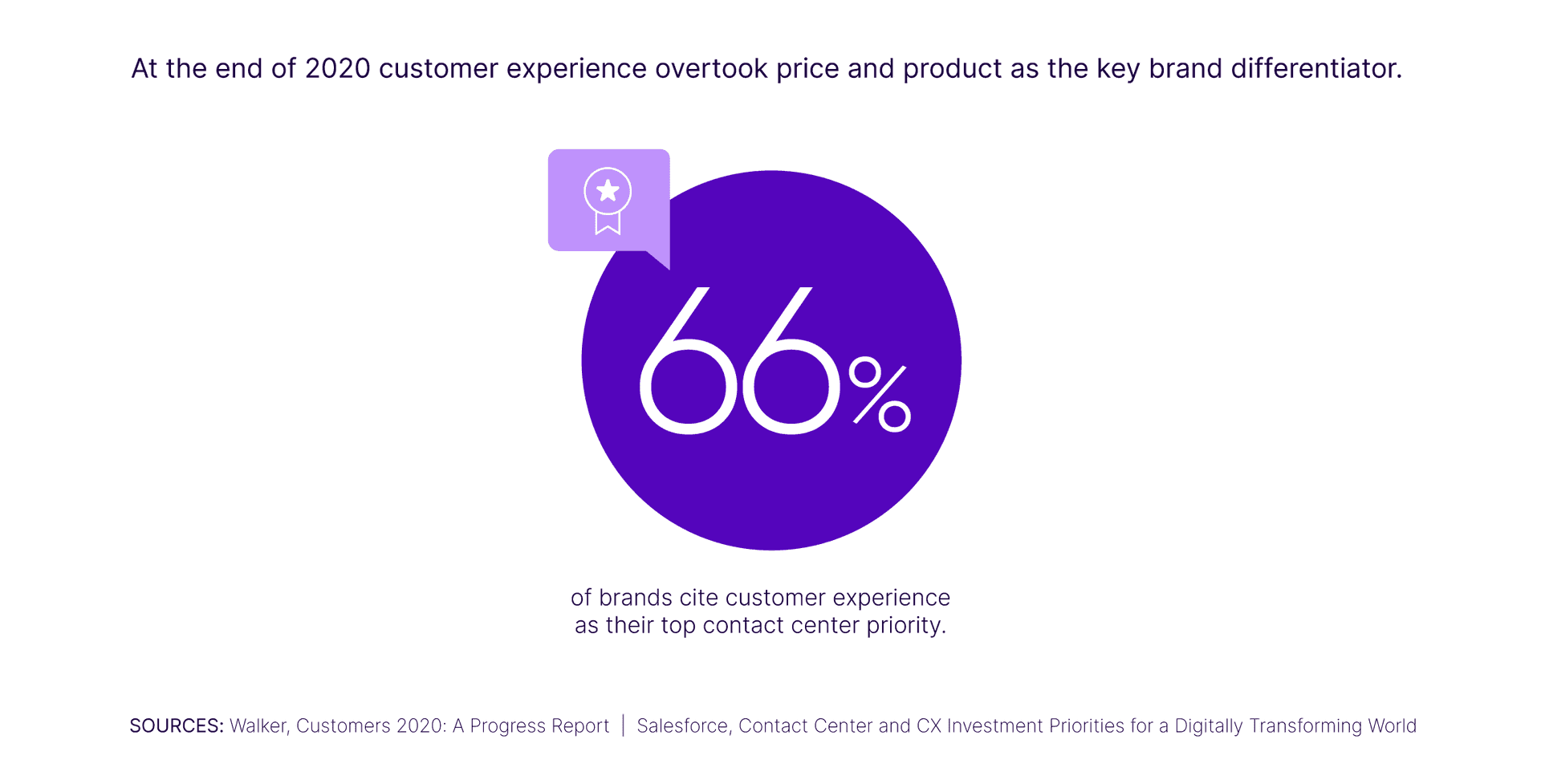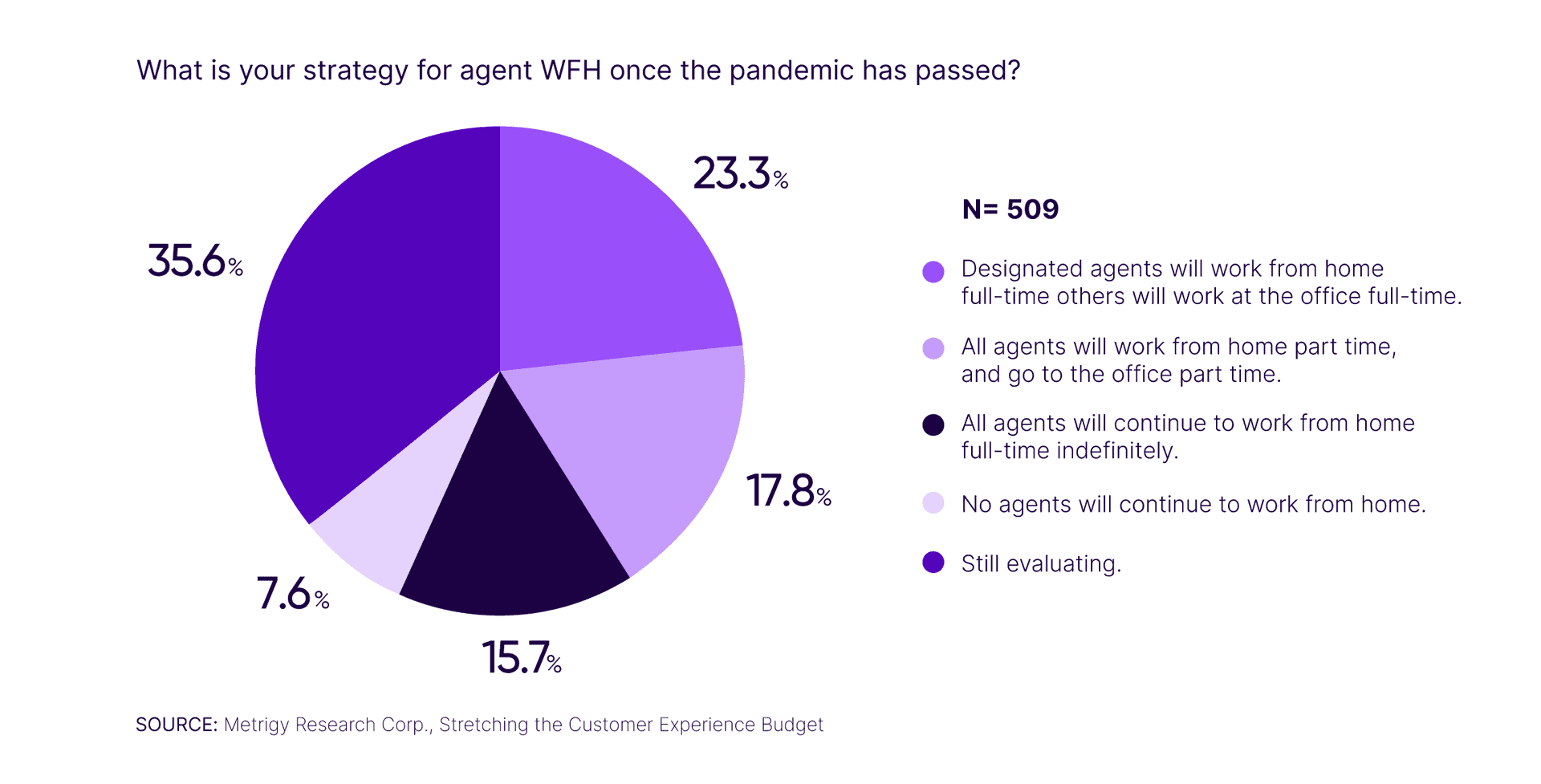3 CX investments you should prioritize to deliver exceptional customer experience

By Daniel Murillo
0 min read

Discover the main three CX investments to prioritize to improve your customer experience.
The COVID-19 pandemic caused businesses worldwide to struggle to survive as they coped with challenges on multiple fronts. Faced with supply chain disruptions and with most, if not all, of their workforce at home, organizations had to make smart and fast decisions to minimize disruptions to their operations.
What’s more, customer expectations and shopping behaviors shifted due to people being encouraged to stay at home for long periods. This prompted many businesses to focus even more on making customer experience (CX) a competitive differentiator.
Delivering customer experiences that stand out from the competition requires memorable and positive interactions throughout the customer journey. Customer service is an essential part of this journey. But with all the changes in the last 18 months, what contact center investments should you prioritize on the road to exceptional CX?

AI-infused omnichannel self-service.
Self-service has been around for a long time. Usually seen as a necessary aspect of customer service, but one where most companies were not in much hurry to prioritize or innovate upon. However, in the last few years, self-service has come back to the forefront as shopping experiences become more digital.
Two-thirds of Millennials start their customer journeys online, and these are pre-pandemic numbers. People view organizations more positively if they offer self-service options. Metrigy’s latest report, Stretching the Customer Experience Budget, found that self-service utilization is expected to increase by 19% in 2021.
Just simply offering self-service options is not enough to be a differentiator. Yes, you need to have knowledge bases, communities, and helpful web content across multiple channels. But customers expect to have access to the answers they are seeking faster and faster.
Look into AI-enabled chatbots, voice bots, and interactive voice response (IVR) to find out what customers want. What’s more, easily obtain information from the customer so that if an agent needs to be involved, they have the right information from the get-go.
A virtual assistant can autonomously solve customer issues through a conversational experience, using AI speech capabilities, understanding customer intent, and retrieving data from different systems. This is why nearly 40% of CX leaders added customer-facing virtual assistants to their contact centers in 2020, and another 33.6% are planning to do so in 2021.
Unified communications for more personalized service.
Today’s consumers also seek highly personalized service. They want to feel that businesses care about them, know them, and are there to help and support them, no matter their struggles. You can see this even with the most basic of information. According to Accenture, 75% of consumers are more likely to purchase from a company that knows their name and purchase history.
To make your customers feel like you know them requires that your employees have access to accurate and up-to-date customer information at all times. To reach this goal, businesses need to ensure that their agents have timely access to a complete view of the customer. Who are they? Where are they located? What product or service do they use? Have they called before? These are questions agents need to be able to answer quickly.
A complete view of the customer can be achieved if your contact center is deeply integrated with other technologies like customer relationship management (CRM), unified communications (UC), and ticketing systems. For instance, CX leaders that integrated their UC and contact center platforms reported a 56.7% increase in customer ratings and a 19.7% decrease in operational costs.
Providing quick access to accurate customer data before and during calls, and while logging or updating relevant cases or incidents is essential. Empowering your agents with this information helps them deliver personalized services, and also improves efficiency and reduces call times.
Thriving with a work from home workforce.
The pandemic also brought with it the necessity to have contact center employees work from home (WFH). Something that was practically unthinkable back in 2019. At the same time, the surge in online customer shopping last year added expectations of 24/7 customer service.
More than half (55.5%) of organizations say they need more agents to support the volume of customer calls and interactions coming into their contact centers. Businesses that had relied on on-premise solutions saw themselves struggling to cope with a remote workforce and these new customer expectations.
Cloud-based contact center systems allow agents to work remotely and offer increased scalability to adapt to rapid changes in the volume of customer requests. Cloud solutions also offer the visibility and capabilities required for supervisors to onboard, mentor, and manage agents.
What’s more, it seems that this shift to WFH may be here to stay with 57% of CX leaders deciding to maintain WFH policies for the foreseeable future . And this might result in positive outcomes since most companies said their customer experience scores were not negatively impacted during the pandemic.

COVID-19 brought many challenges and changes to customer service, and unfortunately, it seems like the pandemic will remain with us for the rest of 2021. However, with investments in the right technology, businesses can adapt to unforeseen conditions and even thrive by providing the experiences that these new customers are searching for.
Before you go, take a quick look at these numbers:
- 66% of brands cite CX as their top contact center priority.
- Self-service utilization is expected to increase by 19% in 2021.
- 33.6% of CX leaders are planning to add customer-facing virtual assistants to their contact centers in 2021.
Find this and more relevant information on the new Metrigy report, Stretching the Customer Experience Budget, where you can learn more about how the pandemic has affected contact centers and how many organizations are turning to technology to improve customer interactions.









